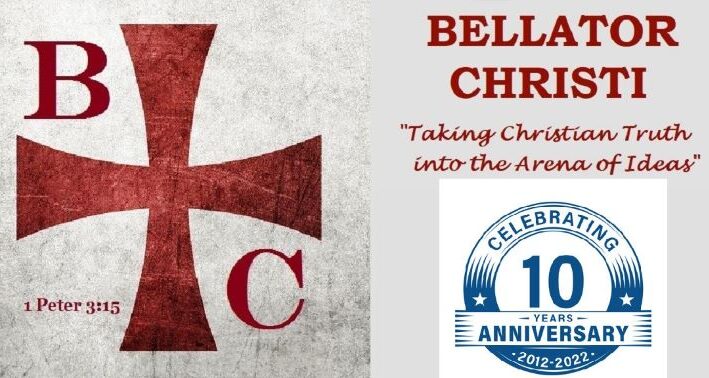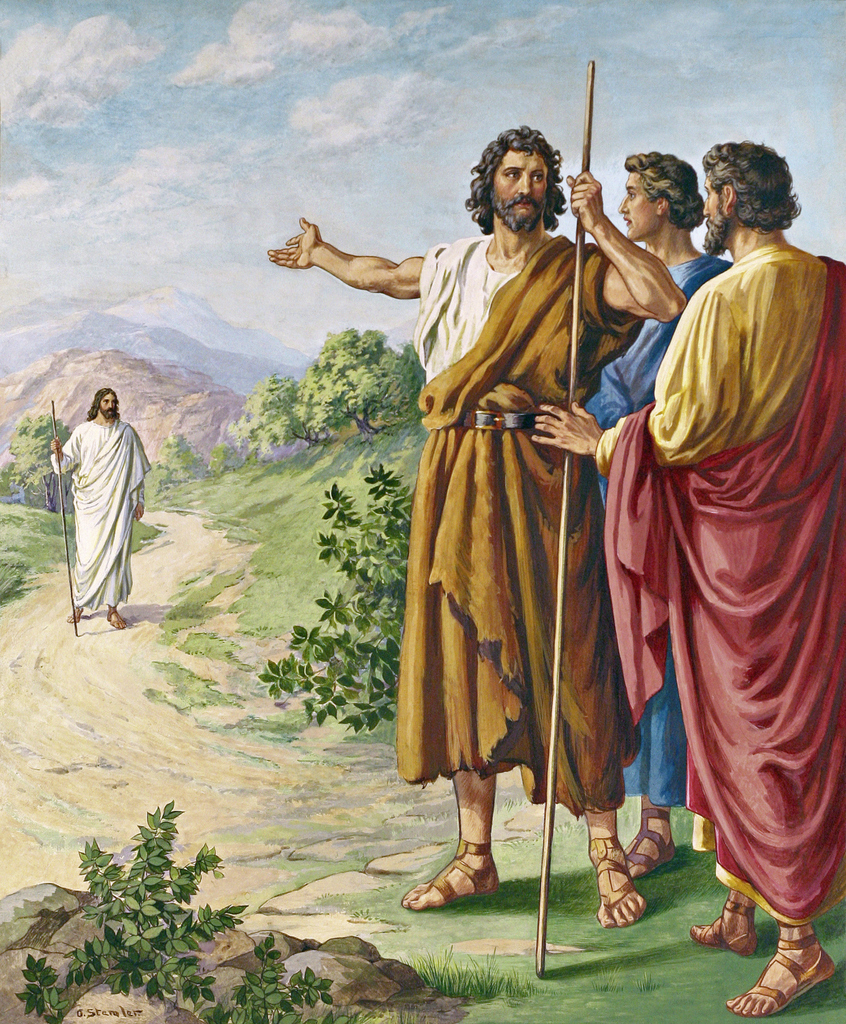By: Brian G. Chilton | February 7, 2022
A version of this article appeared at MoralApologetics.com. That piece can be found at https://www.moralapologetics.com/wordpress/oraltradition
How accurate were the early apostles in passing along the early Jesus traditions? This is a question that is foundational for those who seek to defend the truthful nature of the New Testament Gospels. For some, the differences in the stories present a difficult task in holding to the inspiration of the biblical texts.
In a heartfelt testimony, Bart Ehrman describes the origins of his descent from a fundamentalist Christian to an atheist-leaning-agnostic in his book Misquoting Jesus. The central factor in Ehrman’s doubt was the differences found in the Gospel texts. The catalyst of his departure was an apparent error in Jesus’s quotation of 1 Samuel 21:1–6, ascribing David’s entrance into the Temple while Abiathar was a high priest.[1] Additionally, the differences in the Gospels posed a problem for his view of Scripture. If the writers of the New Testament intentionally tried to mislead individuals, then how can one accept the truth behind their claims?
While Ehrman is correct in that Christianity and Judaism are “bookish religions,”[2] James D. G. Dunn is also correct in noting that properly understanding the transmission of early Jesus requires a shift in one’s default thinking to an “oral mind-set.”[3] That is to say, it must be considered the impact that oral traditions played in early transmission. However, one must take care not to dismiss the importance of written traditions, as well. In a sense, the student of early Christianity must place oneself in a culture that prized both oral and written traditions, particularly when evaluating the transmission of early Jesus traditions. While Ehrman’s approach is popular, he accepts a model that is becoming less and less likely and only represents one of three possible options. Let us look at the three models of oral traditions and observe which one, or ones, most closely aligns with the New Testament texts.
Informal, Uncontrolled Model—Bultmannian Viewpoint
The first model is advocated by German scholar Rudolf Bultmann. In his book Jesus and the Word, Bultmann shows a striking similarity to Ehrman’s concepts when he writes, “I do indeed think that we can know almost nothing concerning the life and personality of Jesus, since the early Christian sources show no interest in either, are moreover fragmentary, and often legendary; and other sources about Jesus do not exist.”[4] Bultmann does not deny that a genuine Jesus tradition is found in the Gospels, but holds that they have faded from view. Like Ehrman, Bultmann argues that the earliest community was not interested in preserving historical information about Jesus and his messages, but they were rather more interested in the situations facing the evolving church. Thus, the transmission of the Jesus traditions was informal because of not having an official teacher to pass along (i.e., παραδιδωμι) the information, and it was uncontrolled since the community exercised great fluidity as the data was changed and shaped according to the needs of the time. Historical accuracy was not the primary focus in this model. While Ehrman and the Jesus Seminar popularized this model, this is far from the only one.
Formal, Controlled Model—Scandinavian School
In stark contrast with the informal, uncontrolled model, the second model comes from Scandinavian scholars such as Birger Gerhardsson, Harald Riesenfeld, and Samuel Byrskog. They contend that the church had far more control over the Jesus traditions than previously contended. Riesenfeld argued that the “words and deeds of Jesus are a holy word, comparable with that of the Old Testament, and a handing down of this precious material is entrusted to special persons.”[5] In his classic yet controversial book Memory and Manuscript, Gerhardsson rightfully notes that the transmission of the Jesus traditions resembles the handing down (i.e., παραδιδωμι) of the Oral Toral, which was set forth with care using mnemonic devices, written notes, repetitions, and with a great concern for accuracy.[6] As Riesenfeld further concludes, the παραδιδωμι of the Jesus tradition was controlled in the sense that the key features were memorized and preserved and formal as it was entrusted to a special school of disciples. Thus, “Jesus is the object and subject of a tradition of authoritative and holy words which he himself created and entrusted to his disciples for its later transmission in the epoch between his death and the Parousia.”[7] But what about the portions of Scripture that seem to present variations in the material? Gerhardsson holds that the traditions were more comparable to haggadic material than halakhic material which permits a wider margin of variation—thus, one should anticipate some variations in the retelling of the material.[8]
Informal, Controlled Model—Kenneth Bailey
A third model is provided by Kenneth Bailey in an article written for Themelios Journal, which he calls the “informal controlled model.”[9] The informal controlled model is an ancient transmission methodology used by a community called the haflat samar.[10] Certain individuals of the community acted as the caretakers of the information; they remember the material; and then recite it to the community. The other elders of the community, who also memorize the material, provide correction if the reciter should err in his retelling of the story. While the storytellers were given some license to adapt the material; the core, essential data must remain the same. Bailey estimates that no more than 15 percent of the story could be changed to permit interpretations and applications, but even then, the essential markers of the material cannot be altered.[11] Thus, for Bailey, the material is informal in the sense that the community is involved with the preservation of the material and controlled due to the insistence of the community to accurately convey and παραδιδωμι truthful information that accurately conveys what Jesus said and did. Additionally, evidence that further supports this style of memorization was found in a recent edition of Time magazine. According to Annie Murphy Paul, words are often connected to performance based recitations[12]. A recent study suggests that “months after the final performance of a play, actors recalled dialogue that had been accompanied by movement about the stage better than dialogue that had been spoken while remaining in place.”[13]
Conclusion
From my continued research, the New Testament Gospels seem to convey a blend of the Scandinavian formal controlled model and Bailey’s informal controlled model. The early credal material assuredly matches Gerhardsson’s formal controlled transmission. However, the parables seem to hold a greater similarity with Bailey’s informal controlled model. It may be that different portions of the New Testament Gospels flow from one side of the pendulum to the other. While neither model totally encapsulates what is found in the Jesus traditions, the following can be deduced:
- First, Jesus used techniques that were common to the rabbis of his time to preserve his teachings, so that they could be accurately transmitted to future generations.
- Second, the apostles continued this tradition as they passed the teachings and deeds of Jesus to later generations.
- Third, the early church used some creative flexibility when passing along certain aspects of the teachings of Jesus, particularly the parables.
- Fourth, the early church used every means possible of their time to pass along the Jesus traditions to the best of their ability.
Regardless of whether a passage is found in Gerhardsson’s or Bailey’s model, both emphasize the early Christian community’s commitment to accuracy and, thereby, their commitment to ethical integrity. Ironically, even though Bultmann’s model is the most popular among critics and skeptics, the model is the least likely to cohere with the biblical data. Craig Blomberg, while responding to Dunn’s Jesus Remembered, perhaps puts it best by saying, “we may confidently declare that the approach to oral tradition (of formal controlled and informal controlled models) is far more likely to approximate historical realities than those of Funk, the Jesus Seminar, and others who promote the model of informal, uncontrolled tradition.”[14] Therefore, the New Testament writers were ethically motivated in their commitment to truth. Because, they truly believed that the truth would set one free (John 8:32).
About the Author
 Brian G. Chilton is the founder of BellatorChristi.com, the host of The Bellator Christi Podcast, and the author of the Layman’s Manual on Christian Apologetics. Brian is a Ph.D. Candidate of the Theology and Apologetics program at Liberty University. He received his Master of Divinity in Theology from Liberty University (with high distinction); his Bachelor of Science in Religious Studies and Philosophy from Gardner-Webb University (with honors); and received certification in Christian Apologetics from Biola University. Brian is a member of the Evangelical Theological Society and the Evangelical Philosophical Society. Brian has served in pastoral ministry for nearly 20 years and currently serves as a clinical chaplain.
Brian G. Chilton is the founder of BellatorChristi.com, the host of The Bellator Christi Podcast, and the author of the Layman’s Manual on Christian Apologetics. Brian is a Ph.D. Candidate of the Theology and Apologetics program at Liberty University. He received his Master of Divinity in Theology from Liberty University (with high distinction); his Bachelor of Science in Religious Studies and Philosophy from Gardner-Webb University (with honors); and received certification in Christian Apologetics from Biola University. Brian is a member of the Evangelical Theological Society and the Evangelical Philosophical Society. Brian has served in pastoral ministry for nearly 20 years and currently serves as a clinical chaplain.
https://www.amazon.com/Laymans-Manual-Christian-Apologetics-Essentials/dp/1532697104
Notes
[1] Bart D. Ehrman, Misquoting Jesus: The Story Behind Who Changed the Bible and Why (New York, NY: HarperOne, 2009), 9.
[2] Ibid., 20.
[3] James D. G. Dunn, The Oral Gospel Tradition (Grand Rapids, MI; Cambridge, UK: Eerdmans, 2013), 49.
[4] Rudolf Bultmann, Jesus and the Word (New York, NY: Scribners, 1958), 8.
[5] Harald Riesenfeld, “The Gospel Tradition and Its Beginnings,” in The Gospel Tradition (Philadelphia, PA: Fortress, 1970), 19.
[6] Birger Gerhardsson, Memory and Manuscript: Oral Tradition and Written Transmission in Rabbinic Judaism and Early Christianity (Grand Rapids, MI: Eerdmans, 1998), 335.
[7] Riesenfeld, “Gospel Tradition and Its Beginnings,” Gospel Tradition, 29.
[8] Gerhardsson, Memory and Manuscript, 335.
[9] Kenneth E. Bailey, “Informal Controlled Oral Tradition and the Synoptic Gospels,” Themelios 20, 2 (1995): 5.
[10] Samar is an Arabic cognate of the Hebrew shamar which means “to preserve.” Ibid., 6.
[11] Ibid., 7.
[12] Annie Murphy Paul, “Learning to Remember: The most effective memorization techniques draw on physical and emotional engagement,” Time Special Edition–Memory: How It Works & Science-Backed Ways to Improve It (January 2022), 10.
[13] Ibid., 10.
[14] Craig L. Blomberg, “Orality and the Parables: With Special Reference to James D. G. Dunn’s Jesus Remembered,” in Memories of Jesus: A Critical Appraisal of James D. G. Dunn’s Jesus Remembered, Robert B. Stewart and Gary R. Habermas, eds (Nashville, TN: B&H Academic, 2010), 125–126.
© 2022. BellatorChristi.com






[…] Source: Models of Oral Tradition and the Transmission of Early Jesus Traditions […]